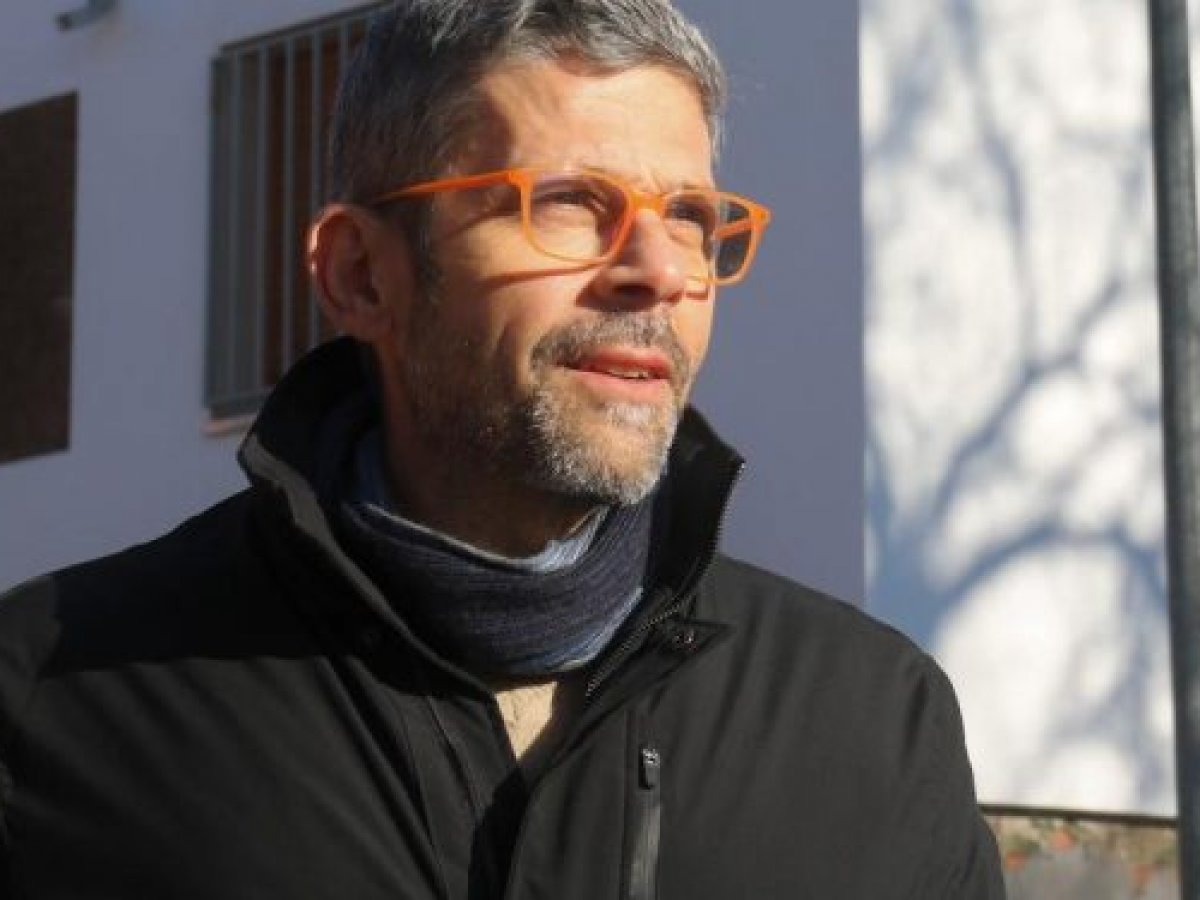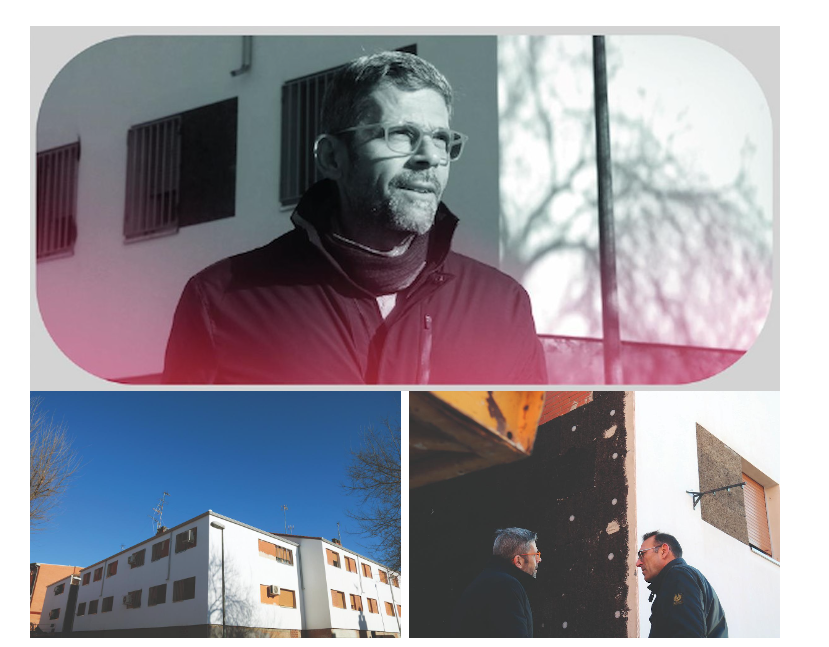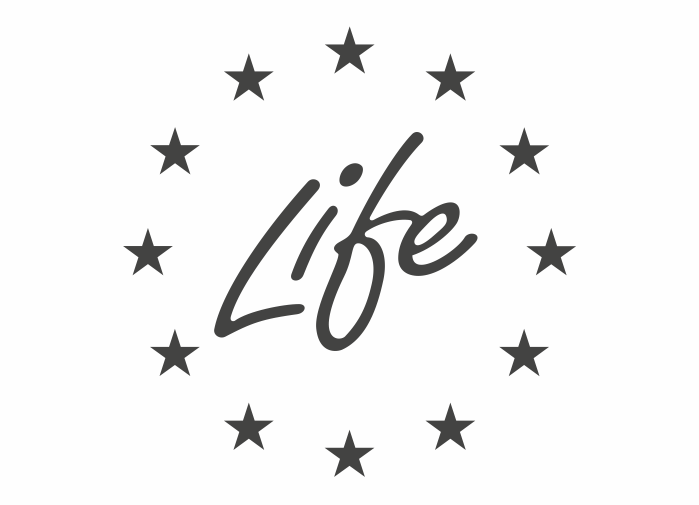
on 15 Maio 2023 1:00 AM
0 comentários
Com o objetivo de desenvolver edifícios com consumos energéticos quase nulos, com baixa pegada de carbono e baixo custo, utilizando materiais e produtos naturais e reciclados, a Junta de Extremadura promove o projeto LIFE ReNatural, que testa e promove novas soluções construtivas em Espanha e Portugal. São soluções baseadas na natureza (Natured-Based Solutions) como ferramentas de adaptação local às alterações climáticas em edifícios e cidades.
O setor da construção é um dos setores que mais recursos consome na União Europeia. Segundo dados do Observatório Europeu do Setor da Construção (ECSO), os edifícios representam 40% da energia total consumida na zona euro, e produzem 35% de todas as emissões de gases com efeito de estufa. Além disso, os dados indicam que os resíduos da construção civil representam 33% do total de resíduos gerados. De acordo com os dados do documento Mapas Setoriais de Recursos, a Espanha é o país da UE que mais recursos consome para a construção, e Portugal é o 8º dos 27 membros da União Europeia.
Neste contexto, o projeto LIFE ReNatural NZEB pretende testar e promover novas soluções construtivas para conseguir edifícios com consumos energéticos quase nulos e com uma pegada de carbono baixa, utilizando materiais naturais e reciclados, em Espanha e Portugal. A Direção Geral de Arquitetura e Qualidade da Construção do Ministério da Mobilidade, Transportes e Habitação da Junta de Extremadura promove a introdução de materiais de construção sustentáveis compostos por cortiça, casca de arroz, adição de cinza de biomassa ou isolante kenaf, uma planta fibrosa nativa de África e Ásia.
Esta iniciativa aposta na economia verde e circular no setor da construção, através de tecnologias feitas com recursos naturais e materiais locais. Os objetivos deste projeto passam por reduzir em 60% as emissões de CO2, bem como a energia incorporada, o valor total consumido na construção de um projeto, através da utilização destes materiais naturais e reciclados com pouca industrialização. Além disso, visa reduzir a demanda e o consumo de energia em 80% durante o período de uso do edifício, reduzir seu peso em 20%, bem como reduzir em 50% os resíduos produzidos durante sua construção.
A JUNTA DE EXTREMDURA ESTÁ HÁ UMA DÉCADA A PESQUISAR COMO REABILITAR CASAS COM MATERIAIS DE PROXIMIDADE QUE TRANSFORMEM OS LOCAIS ONDE TRABALHAMOS, RESIDEMOS E VIVEMOS EM ESPAÇOS SUSTENTÁVEIS E EFICIENTES ENERGÉTICAMENTE. A FILOSOFIA DO PROJETO DE VIDA É RENATURAL?
a construção. Tudo isto com o objetivo de melhorar a qualidade de vida e o conforto dos residentes, apostando na descarbonização do nosso parque imobiliário para favorecer a redução do consumo final de energia e das emissões de dióxido de carbono através de um aumento de eficiência associado à poupança energética.
QUAIS SOLUÇÕES CONSTRUTIVAS FORAM FORNECIDAS ATÉ O MOMENTO?
de construção.
Numa segunda fase, procedeu-se à caracterização técnica, mecânica e de durabilidade de produtos de construção, entre outros blocos de terra comprimida (BTC), painéis de argila, tijolos de casca de arroz, argamassas de cortiça e argamassas de cinzas, de biomassa, de forma a estabelecer as suas propriedades e aptidões para o seu uso na construção.
Numa terceira fase, testaram-se soluções construtivas, à escala real, nos edifícios demonstradores do EDEA-CICE em Cáceres, para conhecer o comportamento dos materiais em ambiente real e comparar os seus resultados, estudando principalmente o seu comportamento térmico e acústico. Os sistemas testados foram:
- SATE com painéis de cortiça.
- Insuflação de isolante de papel reciclado (celulose) em câmara de ar.
- BTC + kenaf + casca de arroz + prato de barro
- BTC + papel reciclado + casca de arroz + prato de barro
- BTC + kenaf + cortiça + placa de argila
- BTC + algodão reciclado + cortiça + placa de barro
- BTC + kenaf + placa de argila
- BTC + papel reciclado + cortiça + placa de barro.
FINALMENTE, SÃO EXPERIÊNCIAS DE DEMONSTRAÇÃO REALIZADAS EM EDIFÍCIOS REAIS APLICANDO ESTES MATERIAIS E SOLUÇÕES CONSTRUTIVAS NOS SEGUINTES PROTÓTIPOS:
- Reabilitação de 4 Casas de Promoção Pública em Santa Engrácia, Badajoz.
- Reabilitação do bloco 16 VPP em San Lázaro, Mérida (Badajoz).
- Reabilitação de um edifício de uso público em La Bazana-Jerez de los Caballeros, (Badajoz).
- Construção de 3 VPP em Ribera del Fresno (Badajoz).

CIRCULARIDADE. O projeto busca promover o uso de materiais naturais e reciclados na reabilitação e construção nova para alcançar edifícios de consumo quase zero com baixa pegada de carbono.
ARE THESE MATERIALS WHOSE USE ALSO PROMOTES THE DEVELOPMENT OF LOCAL COMMUNITIES? HERE LIES ITS SOCIAL AND INTEGRATORY CHARACTER?
One of the environmental premises of the project is the 60% reduction in embedded energy and CO2 emissions in the construction and rehabilitation of the pilot buildings. To achieve these objectives, it is essential to use materials manufactured in the vicinity of the buildings and that imply low energy needs in their manufacture and also in transport until their commissioning.
On the other hand, the use of some of the natural materials studied in the project aims to provide a solution to waste products such as rice husks or biomass ashes, or as in the case of kenaf, where the feasibility of planting has been studied. of this type of crops as an alternative to tobacco cultivation. We understand that these actions are those that contribute to the social character of the project, as well as in the pilot buildings on which energy rehabilitation is being undertaken, where two of them correspond to public housing, located in two neighborhoods such as the neighborhood of Santa Engracia in Badajoz and the neighborhood of San Lázaro in Mérida.
IN THE FUTURE, WILL THE ENTIRE HOUSING CONSTRUCTION PROCESS BECOME LOCAL?
This transformation is complicated due to globalization, but if we want to reduce the carbon footprint in the construction process, we must reduce emissions starting with transport, which implies a transformation of raw materials closer to the places of consumption, as well as using raw materials that require less transformation for their use as construction material.
WHAT PROCESS IS FOLLOWED TO CERTIFY THE SUITABILITY OF THESE MATERIALS AND EXPORT THE MODEL TO OTHER COMMUNITIES?
A basic characterization of the raw materials and a technical characterization of the construction materials have been carried out and, on the other hand, guides have been prepared for the CE marking of some products so that they can be used in construction, such as earthen blocks. compressed, cork mortars, cork granules and clay panels.
TO WHAT EXTENT IS PUBLIC-PRIVATE COLLABORATION ESSENTIAL TO CARRY OUT THIS PROJECT?
Sometimes, the companies that make this type of product are small and do not have qualified personnel to advise and guide them in order to obtain, for example, the CE marking of the products they manufacture. In our case, we have collaborated with local companies that manufacture some of these products and we have advised them on the process and procedures to carry out to obtain the CE marking for their products.
DESPITE THE EUROPEAN UNION FINANCING THE IMPROVEMENTS IN THE ENERGY EFFICIENCY OF THE BUILDINGS, THE REALITY IS THAT THE HOUSING STOCK DOES NOT COMPLY WITH THE ENERGY EFFICIENCY CRITERIA. WHAT ARE THE MAIN OBSTACLES? IS THERE A LACK OF AWARENESS OR INFORMATION?
One of the obstacles is the configuration of the existing building stock, since facing the rehabilitation of a multi-family building, constituted as a horizontal division, requires reaching an agreement with the majority of the residents and this is a handicap for this type of building.
In single-family homes, a greater movement is observed, in fact, most of the aid for residential energy rehabilitation that is currently being processed by this General Directorate, under the Recovery, Transformation and Resilience Plan, corresponds to this building typology.
We believe that it is not a problem of lack of awareness, especially with the situation we are currently experiencing with the increases in energy costs, where citizens are increasingly aware of the need to reduce energy consumption of the house.
IS REFURBISHMENT THE LEVER OF TRANSFORMATION FOR THE CONSTRUCTION SECTOR?
The park built in Spain has a considerable age. It must be taken into account that the first requirements aimed at providing insulation to the elements that make up the building envelope appear in 1979, and until 2006, with the appearance of the Technical Building Code, these requirements were very basic. We can indicate that most of the existing buildings currently have thermal and acoustic insulation systems, both on their facades, windows and roofs, well below the minimum required today that guarantee thermal comfort inside with low energy consumption.
The current situation, where priority is being given in a sustainable way to the rehabilitation of our homes, to the regeneration of our urban fabrics, confirms that rehabilitation is being promoted in a definitive way. The current lines of help for the comprehensive rehabilitation of our homes are decisive; There has never been so much aid intensity, nor so much money available. It will necessarily be a turning point in the rehabilitation of our building stock.
HOW IMPORTANT IS THE EXISTENCE OF EUROPEAN FUNDING TO PROMOTE INNOVATION IN HOME CONSTRUCTION?
In the economic context in which we find ourselves, we understand that it is vital to have aid that encourages the necessary transformations, since the cost of energy rehabilitation is significant and its amortization must be understood in the medium term.
In addition to materials, quality control is becoming increasingly necessary in buildings with aspects ranging from thermal or acoustic conditions to indoor air quality. Is this control being exercised effectively?
Quality control, both in the phase of reception of materials and in the commissioning of the same, is essential to guarantee the required and projected conditions. In this sense, the work of the facultative direction of the works, as well as the work of the quality control laboratories of the building to carry out trials and tests, is of great importance.
With this objective, we are deploying the installation of air quality control sensors, comfort parameters (temperature and humidity) and energy consumption in homes that can give us data on consumption habits, as well as being able to compare situations before and after. of energy efficiency interventions.
The Recovery, Transformation and Resilience Plan of the Junta de Extremadura is committed to improving social housing to increase the quality of life of citizens. How is sustainability, efficiency and comfort implemented in public housing?
In the same way as in free housing, it is essential that both new construction and rehabilitation of a certain magnitude are carried out under the protection of a technical project that adapts, at least, to the regulatory requirements of the current Technical Building Code for thus improve the comfort of people residing in social housing and reduce their energy bill.
PROPOSES THE ESTABLISHMENT OF A BUILDING BOOK SO THAT TECHNICIANS CAN ADVISE THE COMMUNITIES OF OWNERS IN THE RENOVATION PROCESS. WHAT PARAMETERS WOULD YOU CONSIDER? HOW WOULD A MEASURE OF THIS NATURE BE APPLIED WHEN IT IS NOT EVEN POSSIBLE TO STANDARDIZE THE ENERGY CERTIFICATE?
The existing building book (LEE) incorporates the Building Evaluation Report (IEE), the Energy Efficiency Certificate (CEE) and a proposal for improvements that addresses both the constructive deficiencies detected in the evaluation of the building and the energy improvements that are proposed in the CEE with a valuation of the same and a forecast of amortization.
The LEE is a tool to plan and help decision-making, especially in the communities of owners to be able to address actions aimed at the energy rehabilitation of buildings. We do not believe that the energy certificate is a mere formality. We understand that citizens are increasingly aware of the importance of energy consumption in a home, therefore, as with household appliances, when buying or renting a home, more and more attention is paid to its energy rating due to the implications that it will have for the family economy in the future.
ALSO, THE OBJECTIVE IS TO PROMOTE AFFORDABLE RENT TO ENSURE THE RIGHT TO HOUSING. HOW DO YOU GET IT IN AN UNCONTROLLED MARKET?
The model for promoting affordable rental housing by the Government of Spain is based on the need to establish limits on rental prices, as well as on the income of these living units. With this, it is intended to provide the market with a sufficient number of affordable rental homes that come to try to stabilize and control prices.
IS AN INTEGRAL APPROACH TO REHABILITATION, RENEWAL AND REGENERATION POSSIBLE WITHIN THE FRAMEWORK OF URBAN AGENDAS?
Not only is it possible, but it is the way, the road map that we must use. Only from a holistic point of view will we be able to achieve a truly comprehensive rehabilitation of our homes and our urban spaces.
WHAT CIRCUMSTANCES PREVENT OUR CITIES AND URBAN ENVIRONMENTS FROM BEING MORE AND MORE HUMAN SUSTAINABLE?
Fortunately, I think we should ask ourselves what circumstances prevented it, given that right now the obligatory trend is to humanize our cities and environments, making them equally more sustainable. We are aware of things done wrong before, the result of a lack of complete analysis of all the circumstances, the product of an immediacy both in the building process and in the planning process.
The pressure of the housing promotion did not allow a previous and complete analysis. The mobility model is changing completely, moving the car away from many of our urban centers, promoting sustainable mobility and gaining ground from the car in favor of pedestrians, humanizing our immediate environment.



